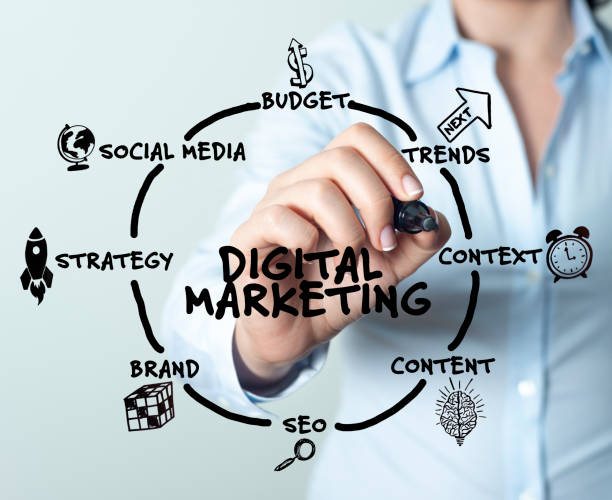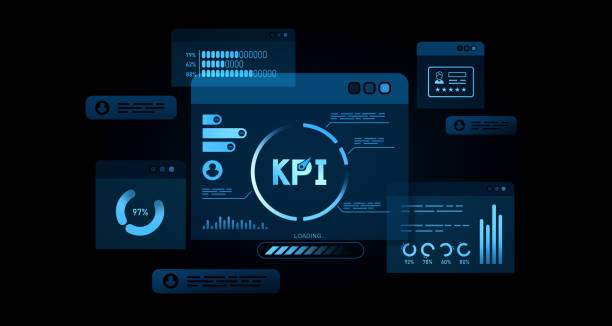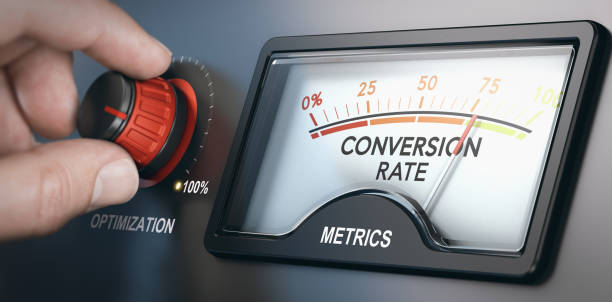
What are Digital Marketing KPIs? Full List Covered (updated 2025)
KPIs (Key Performance Indicators) are how businesses measure the effectiveness of their strategies and day-to-day activities. Think of them as the scoreboard during a big game, showing whether you’re winning or if it’s time to adjust your playbook. Beyond that, setting KPIs helps keep your team aligned and motivated.
Research from Harvard Business Review still reminds us: 95% of employees don’t fully understand or aren’t aware of their company’s strategy. Setting marketing KPIs is a way to communicate that strategy clearly, giving your team concrete goals and a roadmap to achieve them.
What Are Digital Marketing KPIs?
Digital marketing KPIs are quantitative metrics that help businesses assess how well their marketing efforts are performing. These benchmarks allow marketers to track progress, measure success, and make informed decisions.
Common KPIs include:
- Website Traffic
- Conversion Rate
- Customer Acquisition Cost (CAC)
- Return on Investment (ROI)
- Customer Lifetime Value (CLV)

The Main Types of Digital Marketing KPIs in 2025
Digital marketing covers many subfields, each with its own unique KPIs tailored to its goals:
- Search Engine Optimization (SEO)
- Social Media Marketing
- PPC (Pay-Per-Click) Advertising
- Content Marketing
- Email Marketing
- Web Analytics
- Lead Generation
SEO KPIs
SEO continues to be crucial in increasing a website's visibility and driving organic traffic, all while improving user experience and conversions.
→ Explore our Ultimate Guide to Ecommerce SEO in 2025
- Organic Search Traffic: Track how many visitors find your site via unpaid search results.
Tools: Google Analytics
Focus: Keyword optimization, quality content, link-building. - Keyword Ranking: Monitor where your target keywords rank on search engine results pages (SERPs).
Tools: SEMrush, Google Search Console
Focus: Content updates, meta tags, competitor analysis. - Bounce Rate: The percentage of visitors who leave after viewing just one page.
Tools: Google Analytics
Focus: Enhance UX, streamline navigation, A/B test landing pages. - Click-Through Rate (CTR): How often searchers click your listings after seeing them.
Tools: Google Search Console
Focus: Improve meta titles and descriptions to match user intent. - Organic Conversion Rate: The rate at which organic visitors take a desired action.
Tools: Analytics with conversion tracking
Focus: Optimize CTAs, landing pages, personalize user experience. - Backlink Profile: The quality and quantity of inbound links signaling site authority.
Tools: SEMrush, Sitechecker
Focus: Create valuable content, influencer outreach. - Indexation Status: Percentage of your pages indexed by search engines.
Tools: Google Search Console
Focus: Manage sitemap and robots.txt, maintain fresh content.

Social Media KPIs
Social media continues evolving as a powerful engagement and brand awareness tool.
- Follower Growth Rate: Measures your community’s expansion over time.
Focus: Consistent, engaging content; targeted ads. - Engagement Rate: Likes, comments, shares, and clicks indicate follower interest.
Focus: Interactive posts, timely responses. - Reach: How many unique users see your content.
Focus: Diversify content, influencer collaborations. - Share of Voice: Your brand’s presence relative to competitors in online conversations.
→ Discover how to turn social media analytics into actionable strategy
Tools: Hootsuite, Sprout Social
Focus: Active participation in relevant discussions, quality content.

PPC Advertising KPIs
Paid ads still drive targeted traffic and conversions when managed well.
- Click-Through Rate (CTR): Percentage of viewers who click your ads.
Focus: Relevant keywords, compelling ad copy, continuous A/B testing. - Conversion Rate: Percentage of ad clicks that lead to desired actions.
Focus: Optimize landing pages, align ads with user intent. - Quality Score: Google's rating of your ad relevance and landing page experience.
Focus: Improve ad relevance, user experience. - Ad Spend: Monitoring and optimizing your budget.
Focus: Set clear budgets, adjust bids wisely. - Cost per Click (CPC): Average cost per ad click.
Focus: Optimize targeting and bidding strategies. - Conversion Cost: Expense to acquire each conversion.
Focus: Reduce waste, improve targeting. - Impressions: Number of times your ads are shown.
Focus: Refine audience targeting for better exposure.

Content Marketing KPIs
Quality content drives trust, engagement, and conversions.
- Engagement Rate: Time on page, scroll depth, video views.
Tools: Google Analytics
Focus: Audience-centric, diversified content formats. - Content Shares: How often your content is shared across platforms.
Tools: ShareThis, social analytics
Focus: Valuable and relatable content. - Content ROI: Return on investment from content efforts.
Focus: Align content goals with business objectives. - Content Backlinks: Quantity and quality of backlinks to your content.
Tools: SEMrush, Serpstat
Focus: Outreach and content excellence.

Email Marketing KPIs
Email remains one of the highest ROI channels in 2025.
- Open Rate: Percentage who open your emails.
Focus: Personalize subject lines, optimize send times. - Click-Through Rate (CTR): Percentage who click links in your emails.
Focus: Clear CTAs, A/B testing of email elements. - Growth Rate: Speed of subscriber list expansion.
Focus: Incentives for sign-ups, referral campaigns. - Bounce Rate: Percentage of undelivered emails.
Focus: Clean lists, double opt-in verification. - Unsubscribe Rate: Percentage opting out.
Focus: Relevant content, easy unsubscribe options. - Click-to-Open Rate: Effectiveness of email content after opening.
Focus: Engaging copy and design.

Web Analytics KPIs
Insight into website performance and visitor behavior.
- Website Traffic: Total visitors.
Focus: SEO, content marketing, social promotion. - Bounce Rate: Percentage leaving after one page.
Focus: UX improvements, engaging content. - Conversion Rate: Visitors completing desired actions.
Focus: Landing page optimization, A/B testing. - Average Session Duration: Time spent on site.
Focus: Educational and engaging content. - Pageviews: Total pages viewed per session.
Focus: Internal linking, clear content structure. - Traffic Sources: Where visitors come from (organic, social, referral).
Focus: Allocate resources to high-performing channels.

Lead Generation KPIs
Tracking the quality and quantity of leads your marketing generates.
- Lead Generation Rate: Number of new leads over time.
Focus: Targeted campaigns, valuable lead magnets. - Cost per Lead (CPL): Cost to acquire each lead.
Focus: Optimize targeting to reduce CPL. - Lead Quality: Assessment of lead suitability.
Focus: Refine targeting, lead scoring. - Lead Attribution: Which touchpoints led to conversions.
Focus: Use multi-touch attribution models, robust tracking. - Average Time to Conversion: How quickly leads become customers.
Focus: Tailored nurturing and offers. - Net Promoter Score (NPS): Customer loyalty measure.
Focus: Gather feedback, improve experience. - Retention Rate: Percentage of customers retained over time.
Focus: Loyalty programs, exceptional service. - Qualified Leads per Month: Leads meeting sales readiness criteria.
Focus: Marketing automation, lead nurturing.

Customer Metrics
- Customer Lifetime Value (CLV): Total expected revenue from a customer.
Formula: CLV = (Average Purchase Value) × (Purchase Frequency) × (Customer Lifespan)
Focus: Enhance customer satisfaction and upselling. - Customer Acquisition Cost (CAC): Cost to acquire a new customer.
Formula: CAC = (Total Marketing + Sales Costs) / (New Customers Acquired)
Focus: Improve targeting to lower CAC and increase value. - Return on Investment (ROI): Profitability of marketing spend.
Formula: ROI = [(Net Profit – Investment Cost) / Investment Cost] × 100
Focus: Optimize campaigns, reduce costs, increase conversions.

Final Thoughts
Selecting the right KPIs for each digital marketing channel empowers smarter decisions and boosts overall strategy effectiveness. Remember, KPIs aren’t just numbers—they tell the story of your brand’s journey. Embrace them, understand their insights, and let them guide you toward a future where every click, engagement, and conversion moves you closer to your digital marketing goals in 2025 and beyond.
→ For deeper insights on data-driven optimization, read our A/B Testing Ads guide

